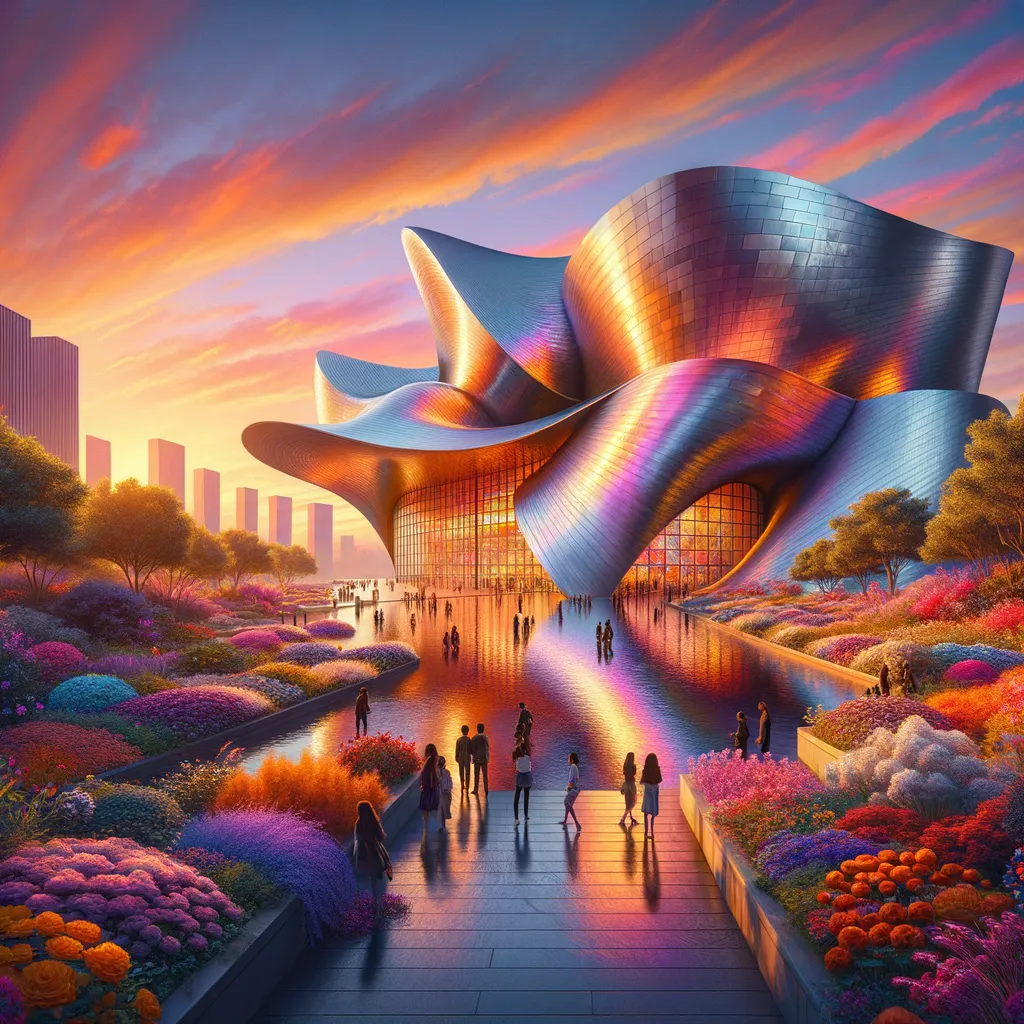Unveiling the Guggenheim: A Journey of Hidden Wonders
In the quiet depths of reflection, a journey through the mind unveiled the extraordinary Guggenheim Museum in Bilbao, a structure that once felt elusive but now revealed itself as a long-lost friend. With its sinuous curves and shimmering titanium, the museum emerged as a testament to the power of art to transcend the ordinary, a living entity that seemed to dance in harmony with the natural world. As the whispers of past visitors echoed through its halls, the realization struck that even in moments of isolation, creativity could flourish, transforming despair into hope. Each exhibit became a rich tapestry of stories, illustrating the resilience of both the museum and the artists who breathed life into its spaces. This reflection ignited a spark of possibility, urging a reimagining of life itself, where beauty and innovation could emerge from the most unexpected corners of existence.
In the memory of April 18, 2020, I found myself wandering through the corridors of my mind, a place where time seemed to warp and bend. The world outside had become a muted echo, a distant hum of uncertainty and stillness, yet within the confines of my imagination, vibrant images danced like flickering shadows. It was on that day, amidst the quiet chaos of a locked-down reality, that I stumbled upon the extraordinary tale of the Guggenheim Museum in Bilbao, a structure that had once eluded my understanding but now unveiled itself like a long-lost friend.
The Guggenheim, with its sinuous curves and gleaming titanium skin, seemed to defy gravity and convention, an audacious declaration of art’s ability to transcend the mundane. As I delved deeper into its creation, I discovered the visionary mind of Frank Gehry, whose inspiration sprang from the natural world. The museum appeared to ripple and flow, as if crafted by the gentle caress of the wind. This piece of architecture wasn’t merely a building; it was a living organism, breathing and pulsating with the rhythm of the city.
In a time when the outside world felt confined, this museum symbolized liberation. Its design was a conversation starter, a blend of chaos and harmony that invited exploration. Each curve and angle beckoned visitors to wander, to lose themselves within its spirals and swoops. I could almost hear the whispers of those who had walked its halls, their footsteps echoing the dreams and aspirations that filled the space with life. It was a reminder that even in isolation, creativity could flourish.
As I pictured the museum, I was struck by the idea that architecture could encapsulate emotion. The Guggenheim stood as a testament to resilience—a structure built against the odds, rising from the ashes of a struggling industrial town. It became a beacon of hope, drawing in tourists and art lovers from across the globe. Its unexpected beauty transformed not just the skyline of Bilbao, but also the hearts of those who encountered it.
Yet, as I marveled at its exterior, I was drawn to the stories hidden within its walls. Each exhibit told a tale, layering the museum with rich narratives and profound connections. I envisioned the artist’s hands, stained with paint, creating masterpieces that would hang in those very halls. The act of creation, much like the building itself, was a journey fraught with trials and triumphs, a dance between chaos and clarity.
In the midst of my reverie, I couldn’t help but reflect on my own journey. The lockdown had become a canvas, blank yet brimming with potential. Like Gehry’s design, my life too could be reshaped, the contours of my existence reimagined. I pondered the ways in which creativity could flourish even in confinement, how dreams could emerge from the depths of silence.
The Guggenheim’s architecture spoke to me in a language of possibility, urging me to see the world through a different lens. It was a reminder that beauty can be found in the unexpected, that even the most unconventional forms can evoke profound emotions. I began to wonder how many hidden gems lay dormant in the world, waiting for a spark of imagination to bring them to life.
In that moment, the museum became a metaphor for resilience in the face of uncertainty. It stood as a symbol of what could emerge from the ashes of despair, a reminder that every challenge could lead to innovation. Just as Gehry had turned the ordinary into the extraordinary, so too could we transform our lives with a little creativity and courage.
As April 18 faded into memory, I realized that the essence of the Guggenheim lived on not just in its physical form, but in the hearts of those who dared to dream. It was a call to action, a challenge to embrace our own creativity in whatever form it might take. In a world that felt increasingly disconnected, how could we, like Gehry, break free from convention and build something beautiful out of our shared experiences?
In the quiet chaos of confinement, the Guggenheim stands as a testament to resilience, reminding that even the most unconventional forms can give rise to extraordinary beauty and boundless creativity.



